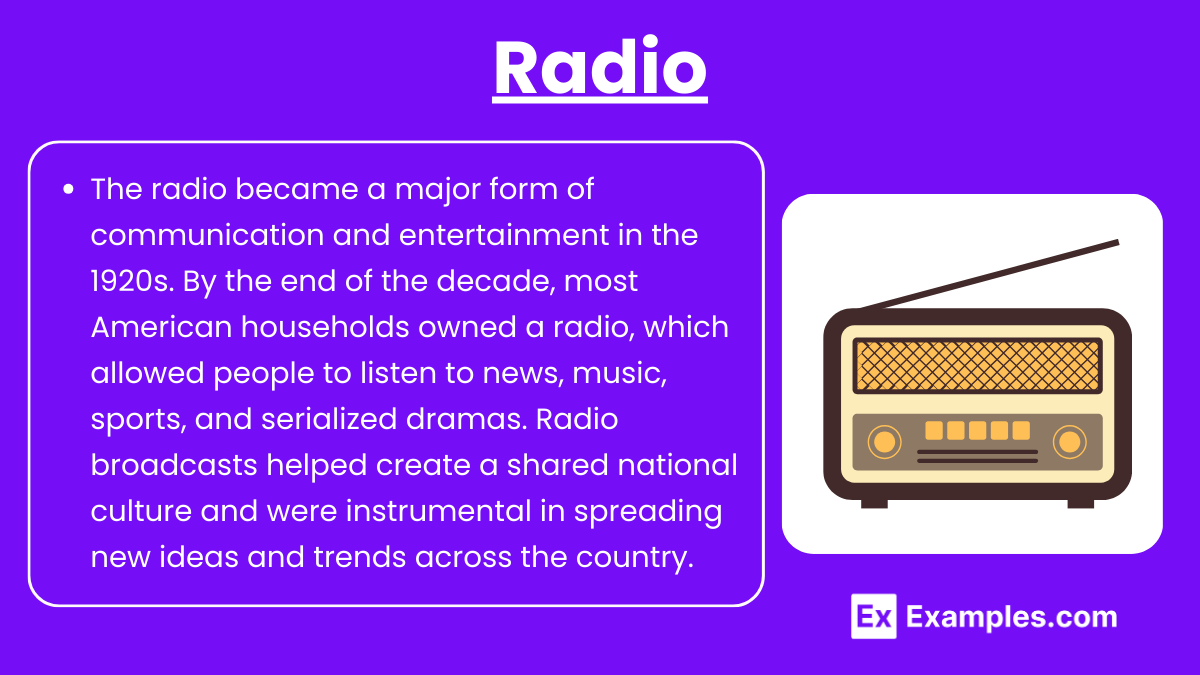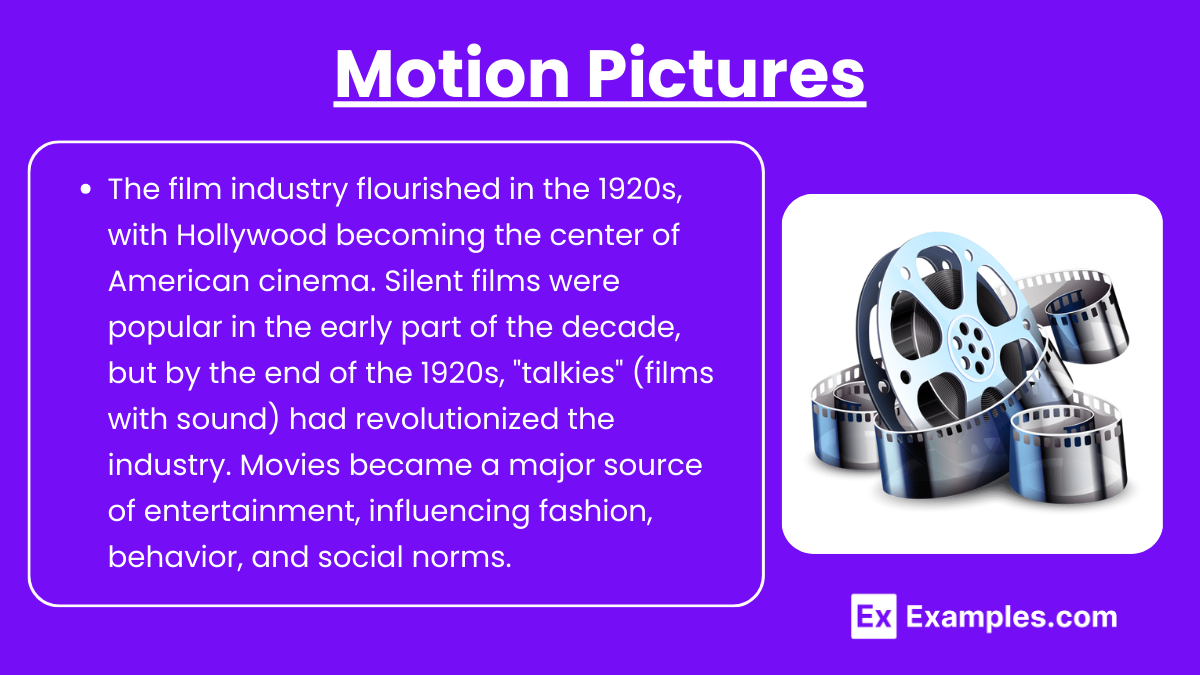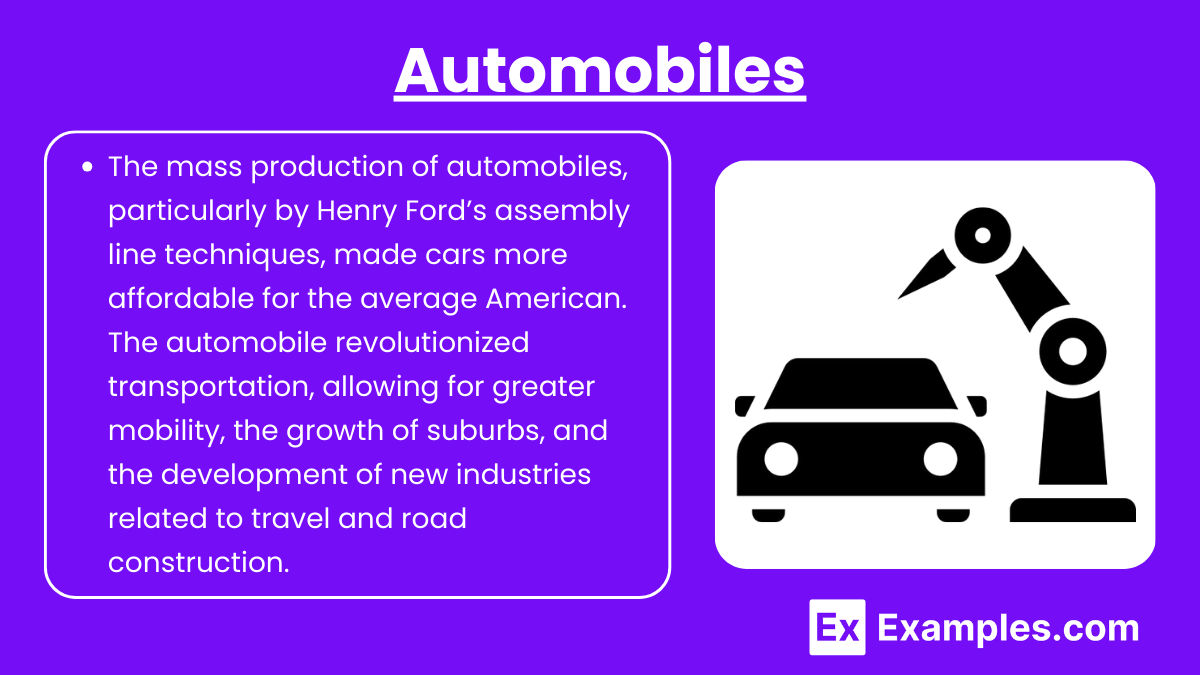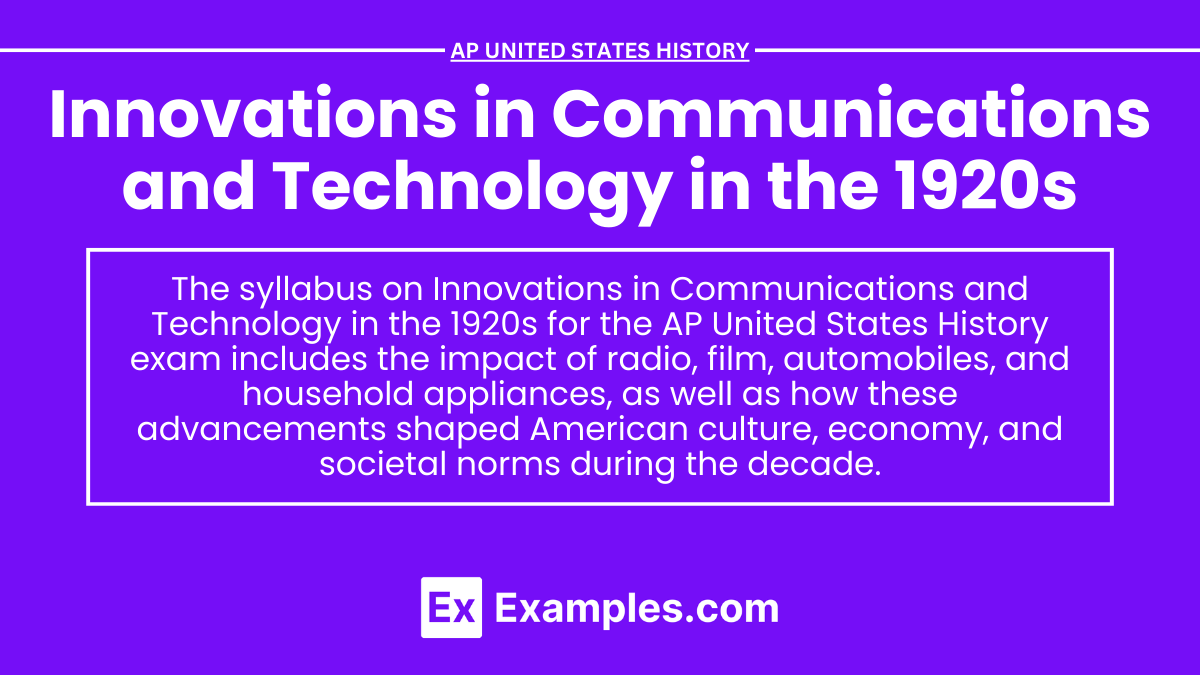In AP United States History, Innovations in Communications and Technology in the 1920s represent a transformative period that reshaped American society, culture, and economy. The widespread adoption of radio, the rise of the film industry with "talkies," and the proliferation of telephones revolutionized communication and entertainment, creating a shared national culture. Additionally, the mass production of automobiles and household appliances significantly improved daily life, enhancing mobility and convenience, and contributing to the rapid modernization of the United States during the Roaring Twenties.
Free AP United States History Practice Test
Learning Objectives
The learning objectives for the topic "Innovations in Communications and Technology in the 1920s" will include the ability to analyze the impact of new technologies, such as radio, film, and telephones, on American society and culture. You will be expected to evaluate how these innovations contributed to the creation of a national culture and the transformation of daily life. Additionally, you will be required to assess the broader economic and social changes brought about by the mass production of automobiles and household appliances.
Key Innovations:
Radio

The radio became a major form of communication and entertainment in the 1920s. By the end of the decade, most American households owned a radio, which allowed people to listen to news, music, sports, and serialized dramas. Radio broadcasts helped create a shared national culture and were instrumental in spreading new ideas and trends across the country.
Motion Pictures

The film industry flourished in the 1920s, with Hollywood becoming the center of American cinema. Silent films were popular in the early part of the decade, but by the end of the 1920s, "talkies" (films with sound) had revolutionized the industry. Movies became a major source of entertainment, influencing fashion, behavior, and social norms.
Telephones

The widespread adoption of the telephone in the 1920s made communication quicker and more efficient. The development of the dial telephone, which allowed users to make calls without an operator, further enhanced personal and business communication.
Automobiles

The mass production of automobiles, particularly by Henry Ford’s assembly line techniques, made cars more affordable for the average American. The automobile revolutionized transportation, allowing for greater mobility, the growth of suburbs, and the development of new industries related to travel and road construction.
Household Appliances

The 1920s saw the introduction and widespread use of household appliances like electric refrigerators, vacuum cleaners, and washing machines. These innovations greatly improved the quality of life by reducing the time and effort required for domestic chores, leading to changes in household management and gender roles.
Examples
KDKA Radio Station: The first commercial radio station in the United States, KDKA in Pittsburgh, began broadcasting in 1920, marking the start of the radio boom.
The Jazz Singer (1927): The first feature-length film with synchronized dialogue (a "talkie"), revolutionizing the film industry and ending the silent film era.
Model T Ford: The mass-produced automobile that became widely affordable in the 1920s, symbolizing the era's technological and cultural transformation.
Bell Telephone: The introduction of dial telephones by Bell Telephone in the 1920s allowed users to make calls directly, enhancing personal communication.
General Electric Refrigerators: Electric refrigerators became common in American homes in the 1920s, representing a significant advancement in household technology.
MCQs
Which innovation became a major source of entertainment and information in American households during the 1920s?
A) Television
B) Radio
C) Internet
D) Telegraph
Answer: B) Radio
Explanation: Radio became a major form of communication and entertainment in the 1920s, with most American households owning a radio by the end of the decade.
What was the significance of The Jazz Singer (1927)?
A) It was the first color film
B) It introduced synchronized sound, marking the end of the silent film era
C) It was the first animated film
D) It was the first film to win an Academy Award
Answer: B) It introduced synchronized sound, marking the end of the silent film era
Explanation: The Jazz Singer was the first feature-length film with synchronized dialogue, revolutionizing the film industry and leading to the decline of silent films.
Which of the following was a key factor in the mass production and affordability of automobiles in the 1920s?
A) The invention of the steam engine
B) The assembly line technique pioneered by Henry Ford
C) The development of electric vehicles
D) The creation of interstate highways
Answer: B) The assembly line technique pioneered by Henry Ford
Explanation: Henry Ford’s assembly line production method made automobiles more affordable and accessible to the average American, revolutionizing transportation and society.


